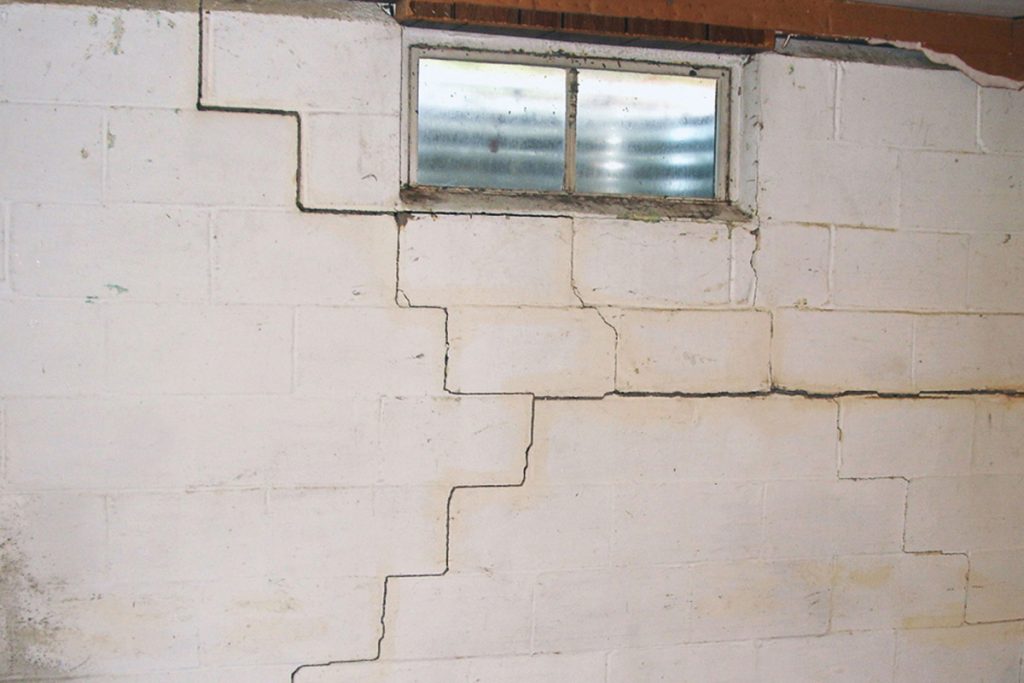You walk downstairs and notice that your basement carpet is wet. You investigate and find that you have a crack in your foundation that is leaking. Since all you have is a leaking hairline crack there is no way you’re going to dig up around your house to waterproof the whole basement because that costs a fortune. Well, you’re in luck. You can get a crack sealed, usually for a few hundred dollars.
In this post we explain how basement foundation cracks are sealed and how to avoid spending a fortune fixing a relatively simple basement leak.
When there is water in your basement, especially when it is damaging your carpet or laminate flooring, you want to get it fixed in a hurry. The good news is that a crack is nothing more than a long narrow hole in the foundation wall; consequently, sealing the crack will stop water from getting into your basement. Also, a leaking foundation crack should not be viewed as a consequence of damaged or blocked weeping tile.
How basement cracks are sealed
In short there are two approaches to sealing cracks in poured concrete foundations:
- Foundation crack injection; and
- Exterior excavation and crack repair.
Note: If you have a leaking crack in a concrete block or cinderblock foundation you can only seal the crack by excavating the exterior and patching the crack. Check out this post on fixing cracks in concrete block foundations.
In a nutshell, crack injection involves the pressurized injection of resin into a foundation crack; the resin solidifies and fills the crack; no crack – no problem.
Exterior excavation is a more labour intensive and destructive process; however, it is as effective as injection and involves the application of an elastic membrane over the crack. Since a “patch” is applied over the crack, much like fixing a flat tire, water can no longer penetrate your foundation wall and the leaky basement crack issue has been resolved.
The cost to seal a basement crack by injecting it is low; check out this article on the cost of crack injection repairs; also, crack injections can usually be scheduled within a day or two and can be done within two hours. Excavating and sealing a basement crack from the exterior is more involved as underground utilities must legally be marked prior to excavation getting underway, so you will generally have to wait at least two weeks if you live within the GTA.
If you have a leaking foundation crack do you have to waterproof your basement?
The answer is no. If there is a hole in your foundation (a crack is a slim vertical hole) and you eliminate the hole, then you eliminate the basement leak. Sealing the crack(s) in your foundation will get rid of your problem as water can no longer penetrate your foundation.
Some basement waterproofing companies will suggest that sealing cracks using polyurethane injection is only a band-aid and that the only proper way to seal a leaking crack is by waterproofing the foundation and replacing the weeping tile; we believe that this is nothing but a money grab. I suggest you have a look at this article:
Concrete injection and crack repair – Does it work?
How not to seal a foundation crack
It is always tempting to want to fix something yourself for next to no money, this is the allure of crack injection kits you can buy online and at some hardware stores. Simpler still is applying hydraulic cement over top of the crack inside your basement in order to stop any water from getting in. As tempting as this is, it is not a good idea. Why? By sealing the surface of the crack you are effectively trapping water within the crack, over time the concrete will become saturated with water and it will begin to deteriorate. Like rotten wood, there is no way to restore deteriorated concrete. If a crack is to be sealed only on the surface then the exterior surface of the crack (yes you have to excavate the wall) must be sealed in order to prevent water from getting into the crack. Here is a picture of a sealed crack where the attempt to seal has failed – the water staining of the concrete confirms that the foundation crack is still leaking.
